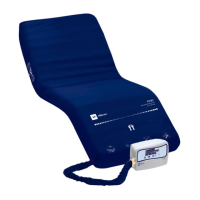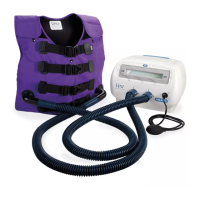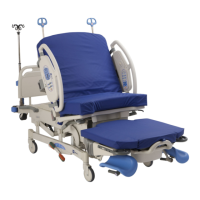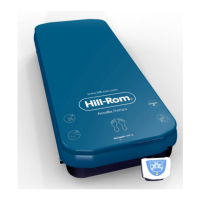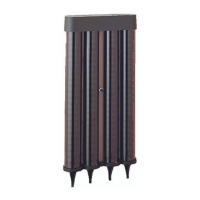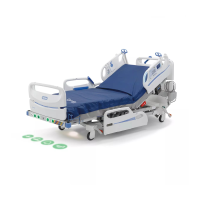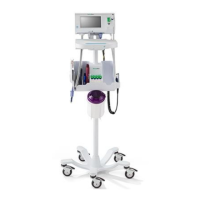Page 6 194412(11) - Hill-Rom® 900 Accella™ Bed - Instructions For Use
• always check (e.g. to and fro movements) that the various locking
mechanisms are in good working order (e.g. siderails, extensions, brakes).
• sufficiently qualified nursing staff det
ermines the usage condition suitable
for the various functions and the degree of supervision to ensure that the
patient uses the bed safely.
When the patient is left unattended:
• apply the brakes to prevent any risks of falling, especially if the patient
leans on the bed when getting in or out,
• leave the sleep surface in the low
est position to avoid serious
consequences in the event of falling,
• use the siderails to secure the patient and
reduce the risk of falling
accidentally,
• lock any function that, if misused, c
ould worsen existing injuries or
pathologies, or even result in bodily injury,
• never leave the bed in the T
rendelenburg position.
Never modify the bed without Hill-Rom's prior written consent. Alterations could
result in injury to the patient or damage to the bed.
Only use manufacturer's parts and accessories.
Never place objects or equipment on the chassi
s or use it to support a person.
Do not use of the bed with loads in excess of the safe working load.
Notice to Users and/or Patients:
Any serious incident that has occurred in relation to the device, should be reported
to the manufacturer and the Competent Authority of the Member State in which the
user and/or patient is established.
Recommendations for the siderails
In the case of patients suffering from particular behavioral difficulties (e.g.,
agitation, mental confusion, loss of sense of direction, obsessive behavior, old
patients, weakness, etc.), properly trained medical staff should ascertain how the
siderails should be used (irrespective of the model or type), whether the patient
should be monitored closely or immobilized and whether the patient helpers should
be left in position, in order to ensure that patients use the bed in complete safety.
Certain national health authorities have issued guideli
nes risks to patients and the
reduction of these hazards, as indicated below.
It is recommended that patients at risk be identified in each establishment or ward
so
that the safety measures most appropriate to their particular needs can be
implemented.

